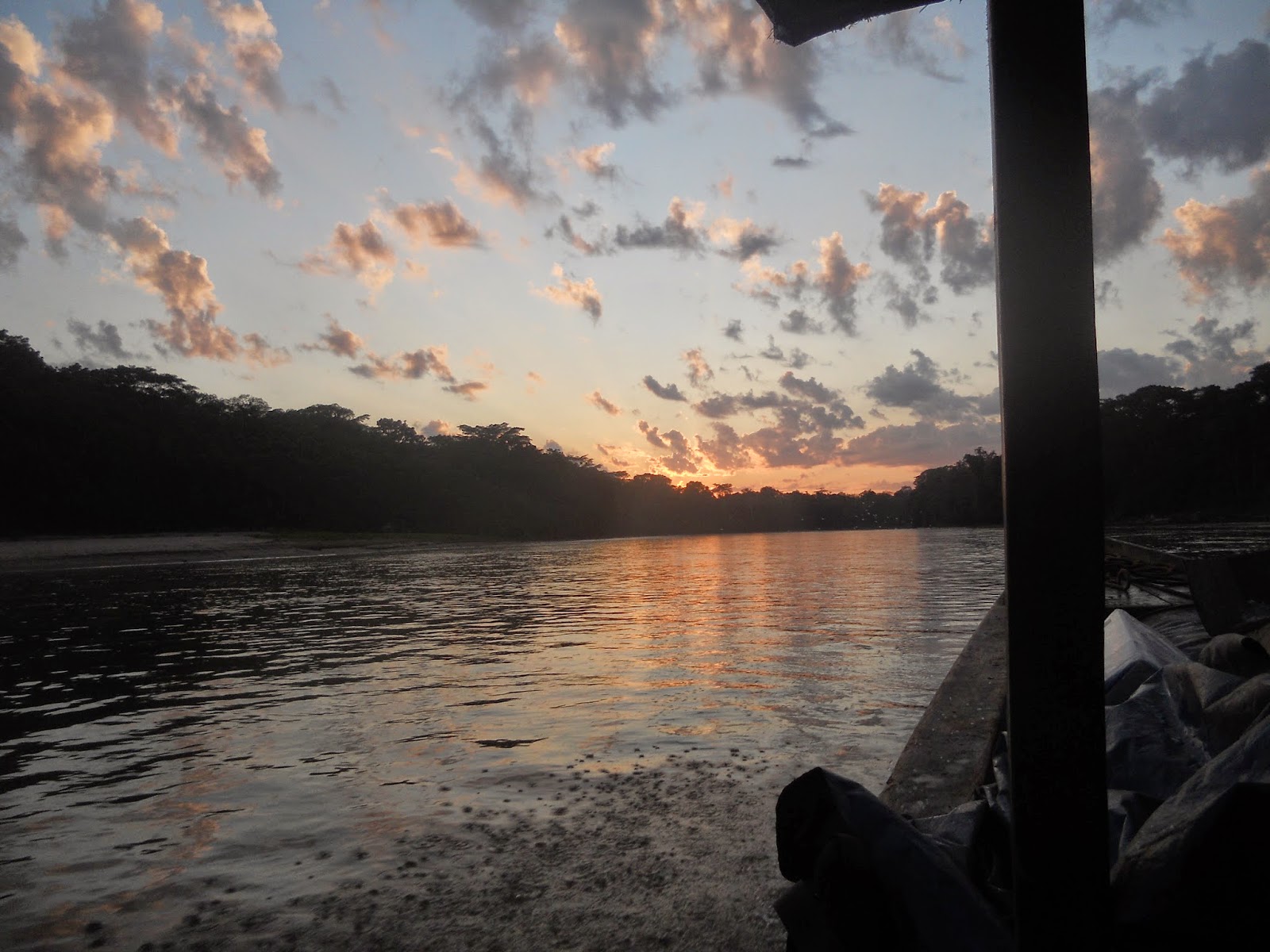By Nick Garzon
30 Aug 2014
 |
| A beautiful sunrise over the Manu River as we set out for Cocha Cashu |
The day dawned early for us, the gifts of last night’s
insect gorge leaving its mark on out weary hands and faces. Nonetheless, we
made the trek to the boats after a delicious breakfast of fresh fruits and
granola provided to us by our diligent and very nice cooks who used the kitchen
at the Limonal ranger station.
On the boats by daybreak, spirits were high as
anticipation of spotting jaguars and wild beasts filled our optimistic minds.
About an hour after staring off, we passed a tree filled with Cobalt-winged
Parakeets and Blue-headed parrots. They would take turns exploding out of the
bush in a flash of bright color before returning to their perch. Sassier than
16 year old girls at prom, the birds kept showing off their plumage before
going back to the trees and chatter amongst themselves until we had long
passed.
A bathroom break proved eventful as tracks were found
leading down the beach. Jaguar tracks! Dizzy with the delight of new discovery,
several of our team ventured off down the beach returning with news of ocelot,
tapir, and caiman tracks as well. However, we had to keep moving down the
river. With morale rejuvenated, we pressed onward, this time our youthful exuberance
blossoming into anticipation of seeing the a caiman.
 |
|
What large feline
could these belong to? (photo by Emily Schrick) |
Several hours of uneventful searching later, there it was! “It’s
sunning itself!” someone cried. A quick pass revealed nothing but a dead
porcupine floating belly up in the shallows. Undeterred by the simple
misunderstanding, we floated on. As the afternoon got later and the sun rose
higher, we did eventually see a white caiman, jaws agape, but only for a second
as our boat got stuck in some mud and had to maneuver out in such a way that
the view was obscured. Luckily we soon closed in on the entrance of Cocha Cashu.
Upon exiting the nine hour boat ride of this second day on the river, the creaks of our
bones echoed through the Amazon as twenty something very stiff college students
and professors, set out to drag gear to the station. Sweat poured out every
possible orifice as we solemnly trudged into the dense jungle.
 |
| Arrival at Cocha Cashu!! |
 |
|
A hefty web spinning
spider found outside my tent, perhaps large enough to catch an Andean Condor |
The air was
unbearably thick and walking a mere fifteen feet led to each person wondering
how the human body could produce so much water. Multiple trips and gallons of sweat
later, we scrambled to set up tents before nightfall in the thick haze of
Amazonian humidity, all the while being subject to the fantastically loud
orchestra of the forest around us. The roar of jungle night life was incredible
to hear and of a curiously different tone than that of daytime.
Dinner was once again ready, hot (why?) and lots of it, and
we set off to get some much needed rest in the stifling heat to get ready for
our first real day at Cocha Cashu, jungle bugs be damned.
Nick Garzon: I’m currently a
senior Biology student at the University of Washington with an interest in
genetics. My number one goal in life (for today) is to get ahold of one of
those wingsuits and fly through the fjords of Norway.





